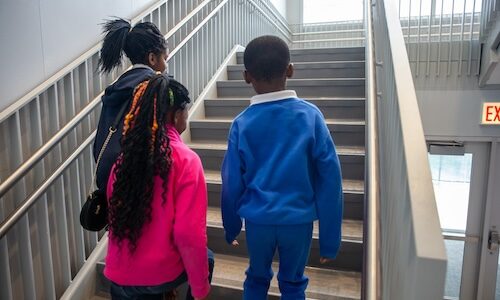 What do you get when you mix the 7 Norms of Collaboration (Garmston and Wellman 2009), Evocative Coaching (Tschannen-Moran and Tschannen-Moran 2010), Adaptive Schools (Garmston and Wellman 2009), Socratic Seminar, and Cognitive Coaching? The result might be one big bowl of great ideas. However, if you sift, sort, and reorganize the resulting concoction includes 10 key ingredients for successfully engaging students in classroom discussion and five to help teachers get these discussions started, which result in new levels of engagement and learning.
What do you get when you mix the 7 Norms of Collaboration (Garmston and Wellman 2009), Evocative Coaching (Tschannen-Moran and Tschannen-Moran 2010), Adaptive Schools (Garmston and Wellman 2009), Socratic Seminar, and Cognitive Coaching? The result might be one big bowl of great ideas. However, if you sift, sort, and reorganize the resulting concoction includes 10 key ingredients for successfully engaging students in classroom discussion and five to help teachers get these discussions started, which result in new levels of engagement and learning.
While there are many components of an effective classroom culture of learning, the idea of engaging students in productive discussions focuses on these four: 1) trust, 2) collaboration and engagement, 3) mindset, and 4) structures. Trust affects student participation in discussions. If they don’t feel safe or valued, their participation may be limited. For students to see discussion as an opportunity to be engaged and collaborate to learn we need to establish their participation as a routine expectation in the classroom. Modeling, practicing, and providing tools support students in learning these new ways of activating themselves as learners and being resources for their peers. Helping students move from a fixed mindset (e.g. I don’t know anything about this, What I say doesn’t matter, or I might be wrong.) to a growth mindset (e.g. I wonder if someone else is thinking like I am, What did Alex mean when he said that?, or Why does Natasha think that?) allows students to better see that what they know and why or how they might connect new learning to current understanding. By providing structures and tools to facilitate discussions we empower students to talk with each other rather than just with the teacher. Structures and tools build a culture of safety, reinforce habits of learning, and support for peers.
Now let’s see about organizing the ingredients necessary for engaging students in discussion. From the 7 Norms let’s take: pausing, paraphrasing, probing, putting ideas on the table, paying attention to self and others, presuming positive intentions, and balancing advocacy and inquiry. When we mix these with the other resources cited above, we end up with a list of 10 key ingredients for classroom discussions:
- Practice active listening – make eye contact and use non-verbal cues to let your peers know you are listening
- Ask questions when you are confused, curious or need to better understand or clarify – pay attention to pauses in the conversation and participate without raising your hand; probe for more information
- Speak when motivated; talk with each other – when you have a comment or question, add to the discussion and be sure to speak to your peers rather than only to the teacher
- Share thinking so others can learn – consider that everyone has something of value to contribute to the discussion
- Paraphrase – use paraphrase to summarize, organize, or shift to new thinking
- Be open to new ideas – approach with a growth mindset so that you can see new ideas, make new connections, and learn from your peers
- Make connections – manipulate your knowledge (academic and personal), draw inferences
- Cite your sources – opinions matter and so does where your opinion came from; be able to back up your facts and opinions
- Actively involve peers – ask questions to involve those who may not have participated (e.g., their opinion or “what if”)
- Balance your ideas with others’ respectfully – surface and question your assumptions, pay attention to everyone’s level of involvement in the discussion
Getting students to think deeply, question well, and support each other as instructional resources are crucial outcomes for using classroom discussions. What you believe as a teacher impacts what happens in classroom discussions. How much control are you willing to give up? How willing are you to move from teacher-to-student-to-teacher response patterns to student-to-student-to-teacher-to student-to student response patterns? How willing are your students to support and deepen their own learning as well as that of their peers by being active participants in classroom discussions?







